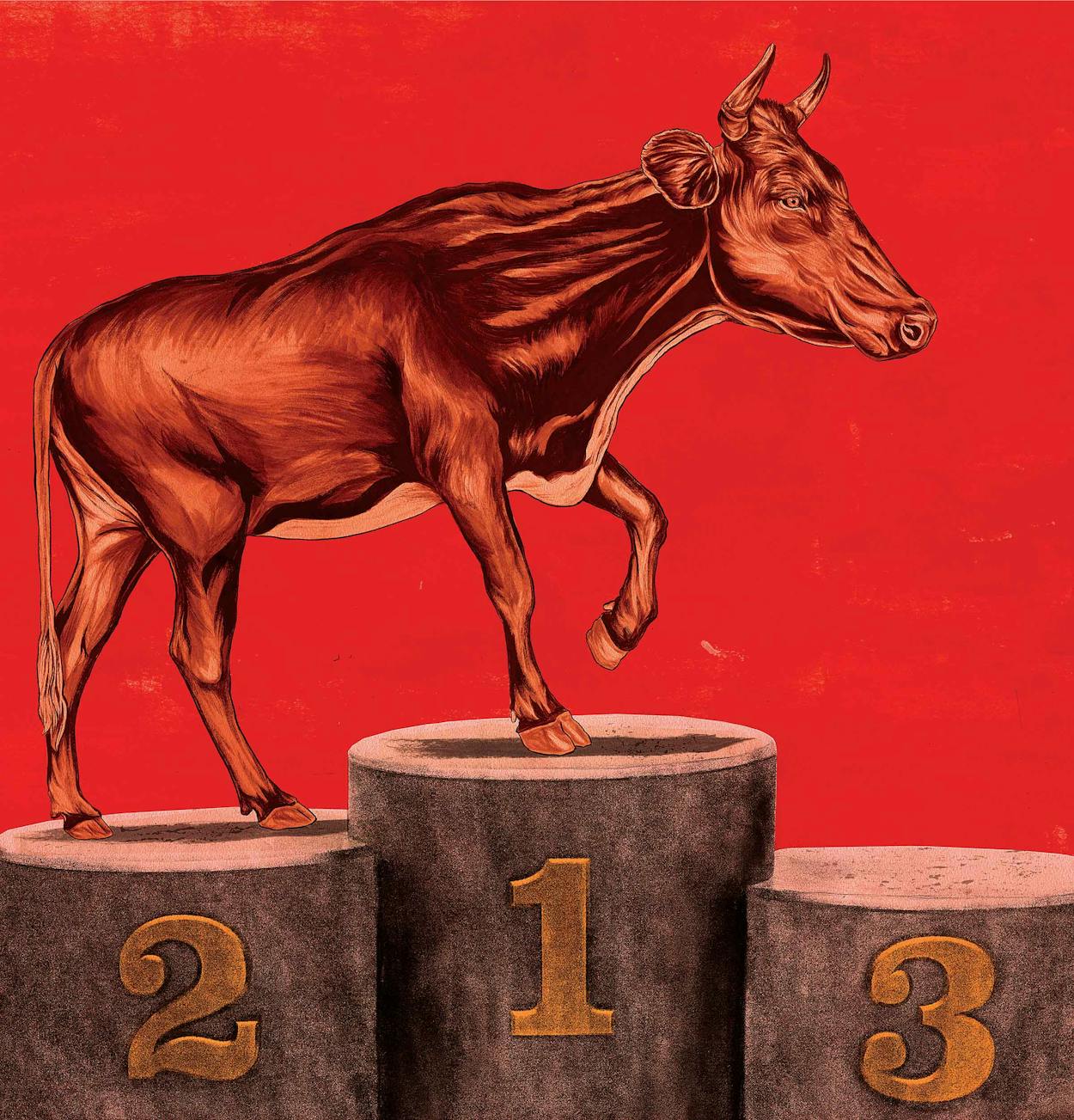Texas meat markets once filled their smokers with the beef nobody wanted. The least desirable cuts, the literal leftovers, were rescued from the trash heap and found new life as barbecue. But over the years, those leftovers have been replaced with beef briskets, and, to an increasing degree, not the cheap ones.
Everything changed in 2009, when Austin’s Franklin Barbecue shook up the Texas scene with the consistency of its phenomenal brisket. Of course, the credit went to the pitmasters and the oak-fired steel smokers, but if Aaron Franklin had a secret, it was that he was paying a premium for all-natural, Prime-grade briskets. Up until then, the rest of the state’s barbecue world had been happy scooping up all the Select cuts at the bottom end of the market—or in some cases, the Choice cuts in the middle range—because that’s the way they had done it for years.
Most retail and restaurant beef is graded as Select, Choice, or Prime, with Prime being the most expensive because more fat is suspended within the lean meat. The extra fat helps it stay juicier as it cooks, while Select briskets, especially the lean half, can easily dry out over the long smoking time. Some might say using Prime beef is cheating, but I’d call it a smart head start in a business where so much of a place’s reputation is determined by one cut of meat.
Prime-grade beef makes up only about 6 percent of the overall market, but demand has risen dramatically over the years. Creekstone Farms has had to turn down aspiring pitmasters who want Prime-grade beef after Franklin named Creekstone in his book, Franklin Barbecue: A Meat-Smoking Manifesto. Many pitmasters have seen the upgrade as a necessity in order to stay competitive on a quality level; they’re being judged not only on how decadent their fatty brisket is but also on just how juicy they can keep the lean portion.
With Franklin’s brisket as the new target in Texas barbecue, pitmasters have started using the same ammunition. At least one, Ronnie Killen, has gone a step further at Killen’s Barbecue, in Pearland, where prized wagyu beef is the brisket baseline.
(Side note: for diners, paying $19 to $22 per pound for Prime-grade brisket has become expected, or at least accepted, across the state. That price should actually be higher, but BBQ joints are absorbing at least some of the cost of using Prime-grade beef.)
The so-called cheaters have been rewarded. Nine of the top ten winners on the latest Texas Monthly list of the top fifty barbecue joints, released in June, use Prime brisket (although Bodacious Bar-B-Q, in Longview, uses a mix of Prime and Choice). The lone holdout? That would be the number one pick, Snow’s BBQ.
The Lexington joint orders Select and Choice beef, which is trimmed down to Snow’s specifications, according to owner Kerry Bexley. There’s incredible skill and attentiveness required to smoke dozens of Select briskets and make them spectacular every time.
They use a few tricks at Snow’s too. Smoking a brisket is primarily a battle against dryness. The longer you cook a cut of meat, the more moisture it loses. So instead of the typical twelve- to fourteen-pound briskets, Snow’s orders seven- to eight-pound ones, which take less time to cook. The briskets are also wrapped in aluminum foil once they’re two thirds of the way done to keep the moisture in, a technique called the Texas crutch.
Smoking a great brisket doesn’t require Prime beef, but paying the premium is a good insurance policy for barbecue joints looking to serve consistently excellent product. However, this means I’m even more impressed with a pitmaster who can wow me with the cheaper cuts. For the hard-core traditionalists who insist that pricier briskets are antithetical to barbecue, they can go back to smoking nearly spoiled meat, just like in the good old days. I’ll be over here enjoying a slice of the good stuff.
- More About:
- Snow's BBQ
- Franklin Barbecue
- Brisket









